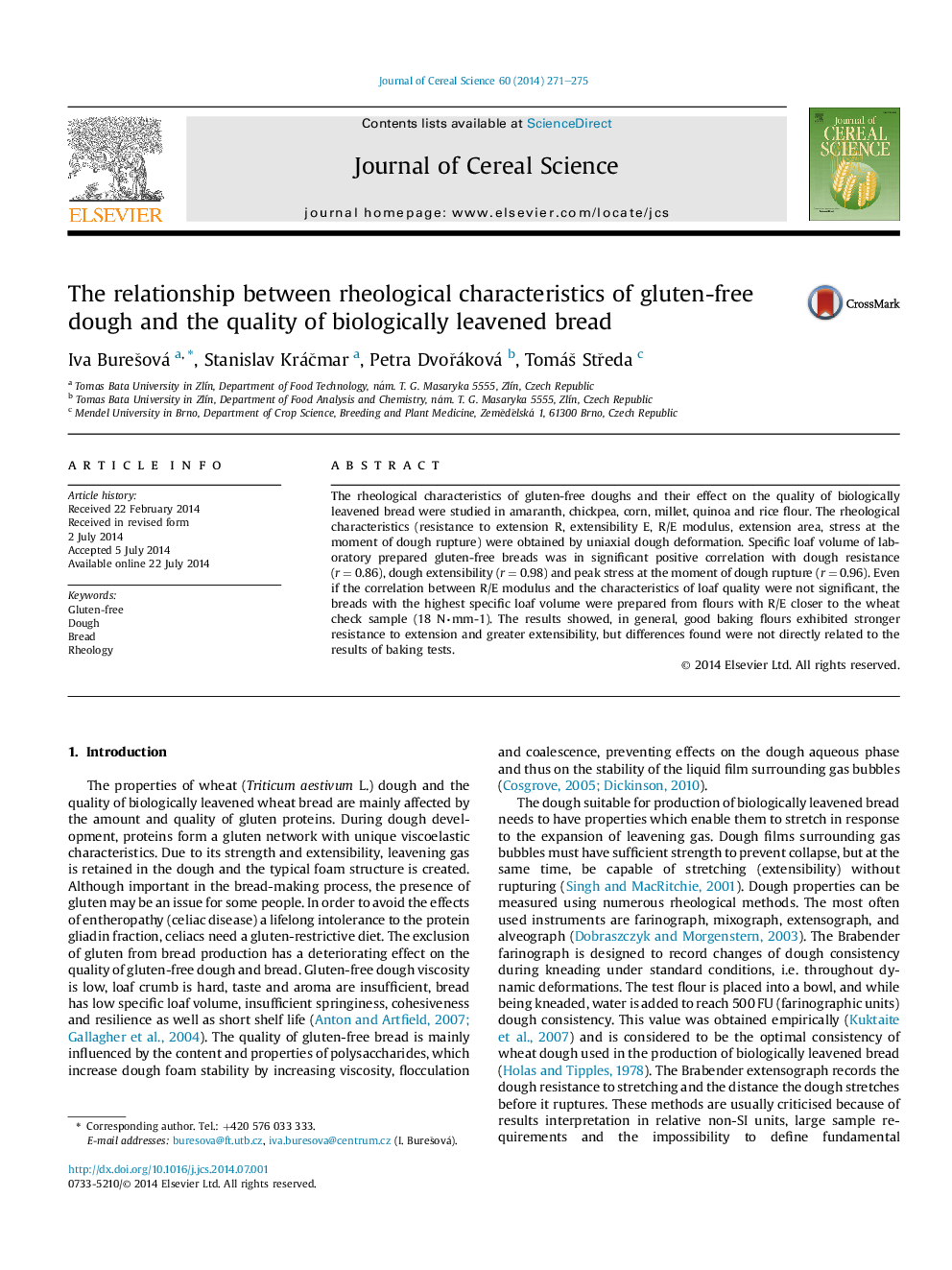| Article ID | Journal | Published Year | Pages | File Type |
|---|---|---|---|---|
| 4515837 | Journal of Cereal Science | 2014 | 5 Pages |
•Resistance to extension of rice dough closest to wheat dough.•Extensibility of chickpea dough closest to wheat dough.•Ratio number of buckwheat dough similar to wheat dough.•Highest quality bread prepared from buckwheat, chickpea and rice flour.
The rheological characteristics of gluten-free doughs and their effect on the quality of biologically leavened bread were studied in amaranth, chickpea, corn, millet, quinoa and rice flour. The rheological characteristics (resistance to extension R, extensibility E, R/E modulus, extension area, stress at the moment of dough rupture) were obtained by uniaxial dough deformation. Specific loaf volume of laboratory prepared gluten-free breads was in significant positive correlation with dough resistance (r = 0.86), dough extensibility (r = 0.98) and peak stress at the moment of dough rupture (r = 0.96). Even if the correlation between R/E modulus and the characteristics of loaf quality were not significant, the breads with the highest specific loaf volume were prepared from flours with R/E closer to the wheat check sample (18 N∙mm-1). The results showed, in general, good baking flours exhibited stronger resistance to extension and greater extensibility, but differences found were not directly related to the results of baking tests.
